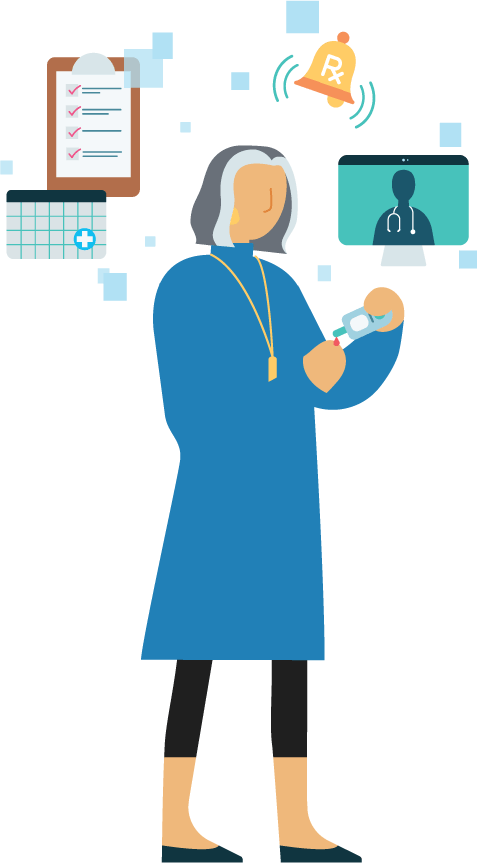Report: Digital Care Management can help lower blood sugar by more than 25%
Nearly 1 in 10 Americans have diabetes—and about 1 in 5 don’t know they have it. If not managed properly, Diabetes can lead to additional, and life-threatening, health complications like heart and kidney disease.
We analyzed user information from the Wellframe app to better understand the impact of digital care management programs on member’s health outcomes. Using Wellframe’s Digital Care Management programs, members with prediabetes* were able to reduce their blood sugar range by up to 10.9%. And members with diabetes** reduced their blood sugar by up to 25% using Wellframe.

Challenges
What keeps members from tracking and managing their blood sugar on their own?
Oncemembers leave the doctor’s office, it can be difficult for providers to know if they’re complying with their recommendations. And if they do face complications, members may not always know when or how to reach out to their care teams.
Remote patient monitoring can give providers some insight into members’ lives at home, but
they show an incomplete picture of members’ health. Providers have to contend with disparate technology solutions, gaps in member insights, and lags in data access. Digital care solutions can help increase engagement and improve outcomes for members with diabetes offering a convenient channel that enables earlier interventions and delivers a personalized health experience.
Solution
Using Wellframe’s Digital Care Management solution, members with diabetes were able to lower their blood sugar by up to 25%.
Members were able to lower their blood sugar using a combination of Wellframe’s 7 Adult Biometrics programs, which help members monitor their blood sugar at different points throughout the day. When members input their blood sugar readings, they can view past inputs as well as a chart that shows trends in their readings over time—making it easier for members and their clinicians to monitor progress.
Through the Wellframe app, members and care teams can exchange messages in a HIPAA-compliant chat. This type of asynchronous communication helps improve healthcare access for members who can’t or don’t respond to telephonic communication alone. Wellframe also offers Diabetes and Prediabetes Support digital care programs as part of the Chronic & Complex Care offering, as well as a Gestational Diabetes program. Members enrolled in these programs receive educational articles, surveys, and encouraging messages to help keep them on track with their health goals.

Results
Members who stayed engaged in their digital care program for 50 days or more saw the greatest reductions in blood sugar.
- 9 to 10.9% decrease in blood sugar for members with prediabetes engaging with the program for 50 or more days, compared with 5.5% decrease for members engaged 50 days or fewer.
Members with diabetes experienced the greatest reductions in blood sugar overall.
- 23% decrease versus 10.9% for members engaged between 51 and 100 days
- 29% decrease versus 8.9% for members engaged for 100 or more days
Most members enrolled in the Diabetes program were only engaged 11-50 days and saw about half the blood sugar than members who were engaged the full 100 days or more.
Deeper engagement drove better outcomes
Untreated or poorly managed diabetes can lead to complications such as heart disease, chronic kidney disease, and nerve damage. It can also impact hearing, vision, and mental health. Helping your diabetic members better manage their blood sugar can prevent more complex conditions from developing—lowering the risk of unnecessary hospital admissions, readmissions and reducing care costs over time. In addition to improving clinical outcomes, offering digital care management can help care managers engage twice as many members compared to traditional care management, while increasing member touchpoints by 6x.
Notes:
*Prediabetes: fasting blood sugar of 100-125 mg/dl
**Diabetes: fasting blood sugar of 126 mg/dl or above
